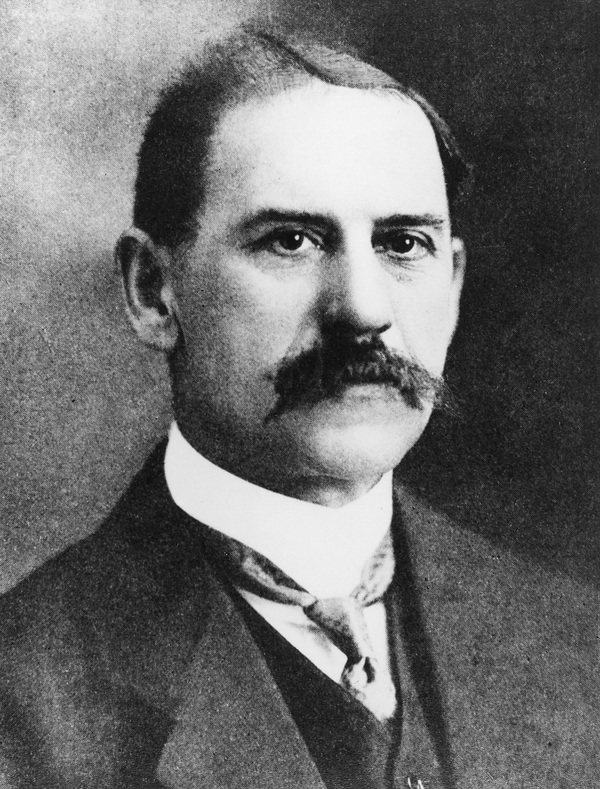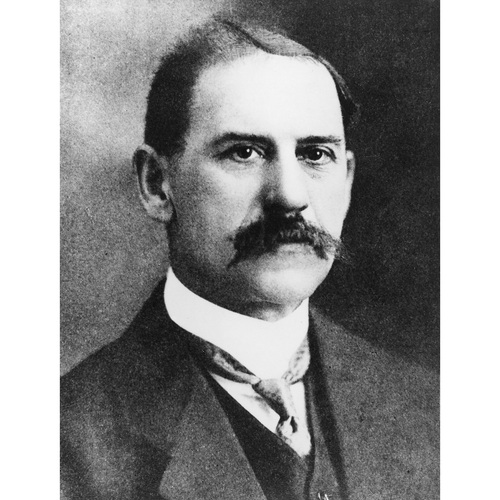
Source: Link
TREGILLUS, WILLIAM JOHN, farmer, rancher, businessman, and politician; b. 2 May 1858 and was baptized in Plymouth, England, eldest son of John Tregillus and Emma Daw; m. 1880 Lillian Chapman, and they had four children; d. 12 Nov. 1914 in Calgary.
W. J. Tregillus was educated in Plympton and Plymouth and later at Taunton College School. A miller like his father, he worked and farmed in Devonshire before becoming a successful flour factor in Southampton, a position he held for 12 years. He probably had substantial financial resources behind him when he decided to move to Canada, for he arrived in Calgary in August 1902 with his wife, two of their four children, a companion and helper to Mrs Tregillus, and a groom. He quickly acquired considerable land west of the city in the area now occupied by the suburbs of Rosscarrock, Westgate, and Wildwood, and in 1903 built Rosscarrock, a magnificent English-style residence.
Tregillus first specialized in horses, importing them from British Columbia for sale to arriving settlers. He also developed quality hackneys for his own use. Dairying became his next interest. Commencing with about 60 cows he built up one of the province’s top Holstein herds and later turned the operation into a pure-bred stock farm, supplying many of the best dairy herds in Alberta. In 1905 he loaned the province’s Department of Agriculture several animals for demonstration purposes. His expertise was widely sought and he travelled the province lecturing to farm groups on the advantages of pure-bred stock. He processed the city’s first pasteurized milk in his own bottling and sterilizing plant, from which he supplied local customers and the Canadian Pacific Railway. To help him run his dairy operations more efficiently he brought young men from England for training and employment at affordable wages. In 1912 he established the Tregillus Clay Products Company on his property. The plant, complete with laboratory, was one of the most modern in the country and was capable of manufacturing 150,000 wire-cut tapestry bricks per day. Tregillus also produced one of Calgary’s first business directories. Such activities would distinguish him from other rural leaders, although his prime concerns would remain agricultural.
Tregillus’s interest in a wider, more persuasive voice for farmers led him in 1906 to join the Canadian Society of Equity, which became part of the United Farmers of Alberta a few years later. He was elected vice-president of the UFA in 1910, and president in 1912, a position he still held at his death. As president, Tregillus proved himself an energetic, forceful, and extremely popular leader. An effective recruiter, he contributed markedly to the numerical strength of the UFA, and was instrumental in the formation of the highly successful Alberta Farmers Cooperative Elevator Company, becoming its first president in 1913. This company would have 40 elevators across the prairies by 1915. Able to recognize new opportunities, in 1910 Tregillus had led a farmers’ delegation to Vancouver to explore the possible westward movement of grain, which was becoming more attractive as construction proceeded on the Panama Canal but would require more elevator facilities at the port. In 1911 he attended an international agricultural conference in Rome. He also served as vice-president of the Canadian Council of Agriculture where, according to the Grain Growers’ Guide (Winnipeg), he “was a powerful advocate of democratic reform in the interests not only of farmers but Canadian citizens generally.”
Tregillus’s indefatigable energy and strong sense of community led him into several other areas of public interest. He was chairman of the Calgary public school board, and in the unsuccessful effort to establish a university in Calgary he donated 160 acres of land for a campus and $50,000 for the establishment of a faculty chair. An advocate of local autonomy, he belonged to the Local Improvement Council and was president of a direct legislation league. Moreover he served as president of the Calgary Horticultural Society and of the Calgary Choral Society. From 1913 to his death Tregillus was a city alderman, and he was acting mayor for a time.
A man who saw issues in a clear, unequivocal light, Tregillus was not afraid to voice his opinion publicly. He was a frequent contributor to newspapers and agricultural journals. On the need for Calgary to enter into a comprehensive city-planning scheme, he wrote to the Morning Albertan in 1911 that “Calgarians . . . would fail ignominiously in their duty did they not look at least a hundred years ahead.” As war in Europe drew near, he took a stand that is surprising, given what is known of his background and social position: he adamantly opposed any Canadian involvement in the pending hostilities and asked the UFA’s annual convention in January 1914, “Shall we be a great, peaceful and prosperous country or shall we be simply the appanage and humble subordinate of a great military Power?”
In November 1914 Tregillus went to Winnipeg to attend meetings of the Canadian Manufacturers’ Association, the Grain Growers’ Grain Company Limited, and the Canadian Council of Agriculture. He became ill and returned to Calgary where doctors diagnosed typhoid fever. Four days later, on 12 November, he died.
W. J. Tregillus’s greatest achievements were in the field of agriculture. His work in developing purebred Holstein cattle and his political advocacy of farmers’ concerns made him a leading figure in Alberta’s rural life. This prominence was matched at the local level by his widespread involvement in Calgary’s business, political, and educational scenes. Tregillus was also a visionary and an innovator with the courage and energy to translate an idea into reality. Although signs of financial difficulty in his enterprises were visible in the pre-war depression of 1913–14, he accomplished much during his short 12 years in Alberta.
Devon Record Office, West Devon Area (Plymouth, Eng.), 167/14 (Charles Parish Church, Plymouth, RBMB), no.3707. GA, M1245, M4815, M6252, M6286. Calgary Herald, 6 Jan. 1910, 13 July 1912, 3 Jan. 1914, 31 May 1958, 1 March 1986. Calgary News Telegram, 23 Jan. 1913, 12 Nov. 1914. Grain Growers’ Guide (Winnipeg), 18 Nov. 1914. Morning Albertan (Calgary), 27 April, 13 July 1911. Canadian annual rev. (Hopkins), 1914: 658. Harold Fryer, Alberta: the pioneer years (Langley, B.C., 1977). A. O. MacRae, History of the province of Alberta (2v., [Calgary], 1912), l: 1000. L. A. Wood, A history of farmers’ movements in Canada (Toronto, 1924; repr., intro. F. J. K. Griezic, Toronto and Buffalo, N.Y., 1975).
Cite This Article
Max Foran, “TREGILLUS, WILLIAM JOHN,” in Dictionary of Canadian Biography, vol. 14, University of Toronto/Université Laval, 2003–, accessed December 29, 2025, https://www.biographi.ca/en/bio/tregillus_william_john_14E.html.
The citation above shows the format for footnotes and endnotes according to the Chicago manual of style (16th edition). Information to be used in other citation formats:
| Permalink: | https://www.biographi.ca/en/bio/tregillus_william_john_14E.html |
| Author of Article: | Max Foran |
| Title of Article: | TREGILLUS, WILLIAM JOHN |
| Publication Name: | Dictionary of Canadian Biography, vol. 14 |
| Publisher: | University of Toronto/Université Laval |
| Year of publication: | 1998 |
| Year of revision: | 1998 |
| Access Date: | December 29, 2025 |



